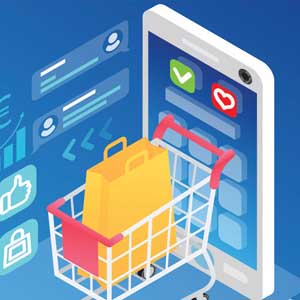THANK YOU FOR SUBSCRIBING

Expanding Role of the CIO with Smart, Connected Products
Steve Dertien, Office of the CTO, PTC


Steve Dertien, Office of the CTO, PTC
With each new wave of technological innovation, IT becomes a significant facilitator in enabling companies to leverage this technology to capture a first mover advantage, operational effectiveness and competitive advantage. Twice before over the past 50 years, information technology radically reshaped competition and strategy; we now stand at the brink of a third transformation.
The first wave of IT, during the 1960s and 1970s, automated individual activities in the value chain, from order processing and bill paying to computer-aided design and manufacturing resource planning. The productivity of activities dramatically increased, in part because huge amounts of new data could be efficiently captured and analyzed in each activity compared to existing human manual processes. This led to the standardization of processes across companies, and raised a dilemma for companies about how to capture IT’s operational benefits while maintaining distinctive strategies.
The rise of the internet, with its inexpensive and ubiquitous connectivity, unleashed the second wave of IT-driven transformation, in the 1980s and 1990s. This enabled coordination and integration across individual activities with outside suppliers, channels, and customers, and across geography. It allowed firms, for example, to closely integrate globally distributed supply chains. The first two waves gave rise to huge productivity gains and growth across the economy. While the value chain was transformed, products themselves were largely unaffected.
Now, in the third wave, IT is becoming an integral part of the product itself. Embedded sensors, processors, software, and connectivity in products have been on the rise the last decade. Coupled with a product cloud in which products are now able to interact and perform in new ways. Product data is stored and analyzed and new applications are developed, driving dramatic improvements in product efficiency, functionality and performance. Massive amounts of new product usage data, combined with existing enterprise system data enable many of those improvements. Another leap in productivity in the economy will be unleashed by these new and better products, and producing them will reshape the value chain yet again.
This 3rd wave of IT-driven competition is providing CIOs with a new opportunity to expand their role within the organization beyond implementing and maintaining the company’s information infrastructure to becoming a strategic business partner. Expertise in managing large-scale technology implementations and emerging technology makes the CIO an imperative role in not only implementing the necessary smart, connected technology stack, but an important strategic partner in developing the overall company strategy on smart, connected products and enabling the business process shifts that are required to successfully apply this strategy.
Their role is already transforming by partnering with the engineering organizations to develop the needed solutions and infrastructure that compliment and enable the smart, connected product. Leading CIOs arealso identifying new ways to leverage technology innovation to differentiate products and services to gain a competitive advantage in the increasingly competitive marketplace.
These emerging examples show a path to facilitate the successful execution of a smart, connected product strategy by supporting increased collaboration between typically siloed departments and business processes. This is especially applicable in two key areas, data and security.
Data
Before products became smart and connected, data was generated primarily through internal operations and transactions across the value chain – order processing, supply chain transactions, customer requests, customer service visits, spare parts consumption, etc. Firms supplemented this internal data with data gathered from market research, customer surveys and external public sources.
Now, for the first time, these traditional sources of data are being supplemented by a new source – the product itself. Smart connected products can generate thousands of real-time data points from embedded sensors, unprecedented in their volume and variety. This new product data is valuable by itself, yet its value increases exponentially when it is integrated with other internal and external data available such as service history, inventory locations, commodity prices, or traffic patterns. Unlocking the full value of the new data is becoming a key source of competitive advantage.
Data management and analysis requires not only technology to collect, distribute and analyze this data but also new processes to incorporate this analysis into decision-making, driving insights across departments, from marketing, product development, manufacturing and service. The management, governance, analysis and security of the new data resource becomes a major new value add activity.
Security
IT departments in manufacturing companies have been largely responsible for cyber security, protecting the firm’s data centers, business systems, employee computers, and networks. However, smart, connected products change the situation dramatically. The job of assuring IT security now cuts across every department.
Every smart, connected product and device now becomes a point of network access, a target of attack, and a place from which attacks can be launched. Smart, connected products are widely distributed and exposed, and hard to protect with physical security measures. Products may be engineered with specific technologies and limited processing power, it may not support modern IT security hardware and software solutions.
Prior generations of devices have often embedded cryptographic capabilities directly within the hardware, directly on silicon and are often unpatchable. These design choices are traditionally made with cost and energy considerations as a primary requirement. With the modern SSL vulnerabilities, these types of devices impose potential security liabilities to the product and the enterprise. CIO’s and CSO’s alike share a responsibility working with engineering to design in evolvable security capabilities.
CIO and CSO’s will also have a role in assessing the operational security for both the enterprise systems that are leveraged with smart, connected products in addition to how those products may interact with others. Recent vulnerabilities and exploitations have ranged from data and intellectual property loss to remote control and manipulation of the products.
Conclusion
Data will form the basis for critical and faster decision making that will power or even alter your business strategy. It will inform and influence how you position your products and the competitive advantage those products or solutions provide our business, customers and partners.Security will increasingly have broad implications across the organization and partners. It will impact how you deploy and manage your solutions, how you engineer your smart, connected products and how your businesses will inter operate and exchange information and capabilities with each other.
Today, CIOs have the opportunity today to capitalize on this third wave of technological innovation, by leading initiatives around data and security and enabling increased collaboration across departments. Expand your role and become the facilitator that enables your company to leverage this technology to capture a first mover advantage, operational effectiveness and competitive advantage.
Weekly Brief
I agree We use cookies on this website to enhance your user experience. By clicking any link on this page you are giving your consent for us to set cookies. More info
Read Also
Advancing Retail through E-Commerce, Cloud and Cyber security
From Code To Impact: Leading Enterprise Ai With Purpose
Reimagining Pension Services Through Responsible Innovation
Maritime: Beyond Systems, Beyond Seas
Human-Centered Innovation in the GenAI Era
The Art and Science of Selling
Responsible Data Leadership in an AI-Driven World
Driving Guest-Centric IT Innovation in Integrated Resorts





















